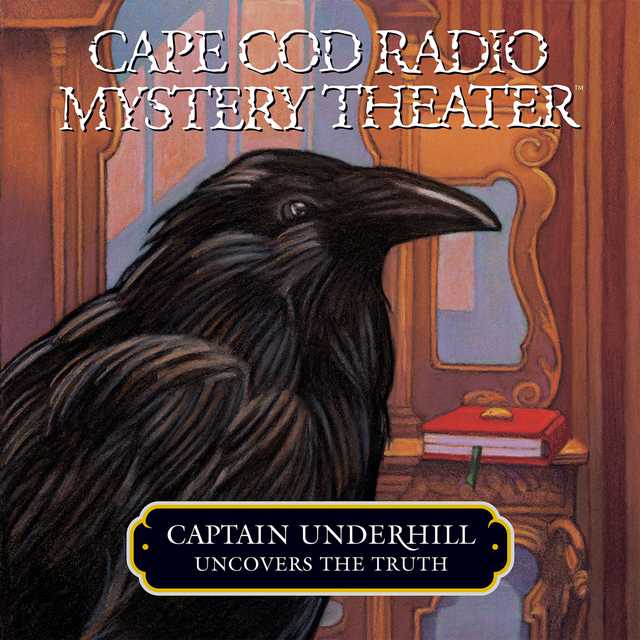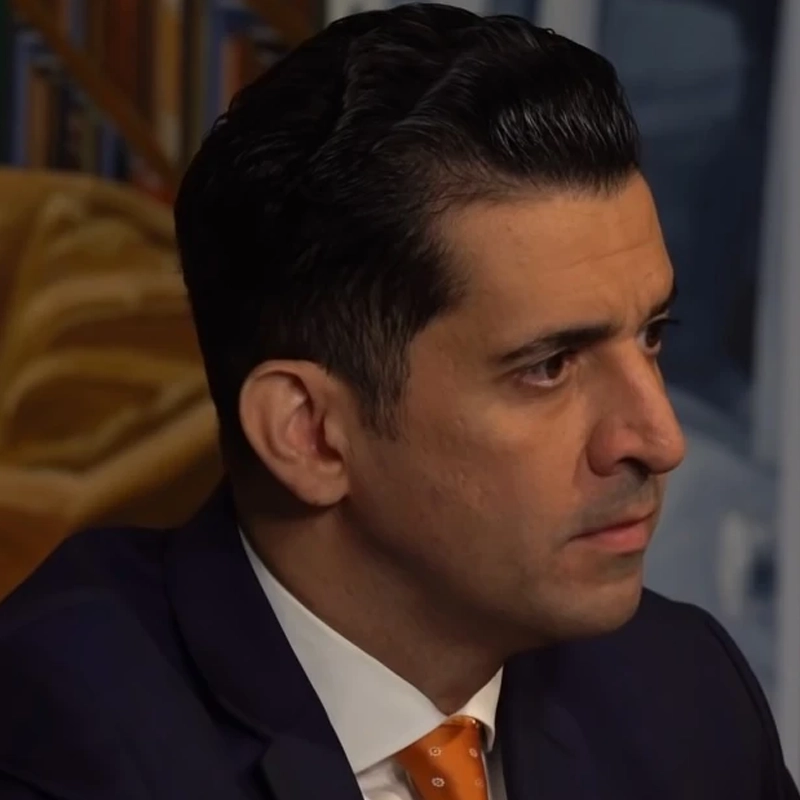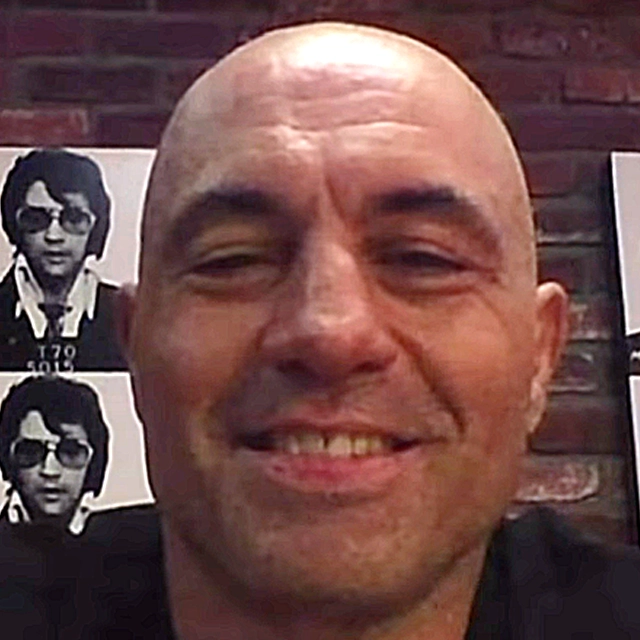Survival of the Sickest Audiobook Summary
How did a deadly genetic disease help our ancestors survive the bubonic plagues of Europe? Was diabetes evolution’s response to the last Ice Age? Will a visit to the tanning salon help bring down your cholesterol? Why do we age? Why are some people immune to HIV? Can your genes be turned on–or off?
Survival of the Sickest reveals the answers to these and many other questions as it unravels the amazing connections between evolution, disease, and human health today.
Joining the ranks of modern myth busters, Dr. Sharon Moalem turns our current understanding of illness on its head and challenges us to fundamentally change the way we think about our bodies, our health, and our relationship to just about every other living thing on earth, from plants and animals to insects and bacteria.
Survival of the Sickest is filled with fascinating insights and cutting-edge research, presented in a way that is both accessible and utterly absorbing. This is a book about the interconnectedness of all life on earth–and, especially, what that means for us.
Read it. You’re already living it.
Read by Eric Conger
Other Top Audiobooks
Survival of the Sickest Audiobook Narrator
Eric Conger is the narrator of Survival of the Sickest audiobook that was written by Sharon Moalem
Eric Conger’s stage credits include appearances Off-Broadway and at the Long Wharf Theater. He has appeared as a regular on Another World and Loving, and has translated the works of Feydeau.
About the Author(s) of Survival of the Sickest
Sharon Moalem is the author of Survival of the Sickest
More From the Same
- Author : Sharon Moalem
- How Sex Works
- Wrath
- The DNA Restart
- Publisher : HarperAudio
- Abraham
- American Gods [TV Tie-In]
- Dead Ringer
- House of Sand and Fog
- Prey
Survival of the Sickest Full Details
| Narrator | Eric Conger |
| Length | 6 hours 39 minutes |
| Author | Sharon Moalem |
| Category | |
| Publisher | HarperAudio |
| Release date | February 06, 2007 |
| ISBN | 9780061230257 |
Additional info
The publisher of the Survival of the Sickest is HarperAudio. The imprint is HarperAudio. It is supplied by HarperAudio. The ISBN-13 is 9780061230257.
Global Availability
This book is only available in the United States.
Goodreads Reviews
Chris
April 02, 2008
Very good.As I wrote to Dr. Moalem,Dear Dr. Moalem,I found your book, Survival of the Sickest, on a table in the bookstore that employs me. The title and concept intrigued me. The material has proved fascinating, and, for the large part, very well researched. I am concerned, though, with a statement you make on page 87, regarding psoralen production in organically grown celery. It reads, Farmers who use synthetic pesticides, while creating a whole host of other problems, are essentially protecting plants from attack. Organic farmers don’t use synthetic pesticides. So that means organic celery farmers are leaving their growing stalks vulnerable to attack by insects and fungi – and when those stalks are inevitably munched on, they respond by producing massive amounts of psoralen. By keeping poison off the plant, the organic celery farmer is all but guaranteeing a biological process that will end with lots of poison in the plant. Within these few sentences, whether by intent or by oversight, you perpetuate a very dangerous fallacy. Your subtext implies that organic farmers, because they choose not to use synthetic pesticides, fungicides, etc, are in some way failing to protect their plants, and in turn the consumers of their foods. The crucial word here is “synthetic.” Even glancing research into the nature of organic farming will yield a wealth of information on natural pest control. For example, using companion planting (e.g. garlic and marigolds protect crops planted near them), natural pest-prevention methods (e.g. ladybugs to manage aphids), and perhaps most importantly, effective crop rotations and management strategies, effective organic farmers are often capable of creating an environment or ecosystem that is simply less accessible to animal, fungal, and even microbial predators. With proper management, the system protects itself without the need for synthetic help. You might be interested to know that genetics play a strong hand here as well. Plant species, like the marigold, that have developed natural defenses have greatly multiplied their species’ success by harnessing the help of human agriculturalists. The flower helps the garden, the gardener breeds the flower. In the same way, the growth of corn provides structure for the growth of beans, and shade for the growth of squash. The beans fix nitrogen in the soil for use by the other plants, and the squash provides ground cover which minimizes weed growth. By carefully selecting the plants and animals he cultivates, and thereby manipulating the ecosystem he manages, an organic farmer uses naturally occurring genetic predispositions, in diet, toxicology, and even plant structure to the benefit of all of the partners in the system.On the other side of things, conventional industrial monocropping, and, admittedly, most organic industrial agriculture, bring their own inherent dangers to bear on the celery plant. Machine weeding, machine spraying, machine fertilization, and machine harvest, not to mention preparation, packaging, storage, and shipping, all tend to batter the plants. It is rare that I see conventionally grown, bagged, and shipped lettuce at my local supermarket without a chunk or two taken out of it somewhere during it’s trip from seed to shelf. I would hazard a guess (admittedly, an uneducated one) that at least the pre-mortem processes listed here drive psoralen production as strongly as the odd bug bite does.In looking through your notes and cited sources, your citations of two papers discussing adverse reactions to celery (with exposure to UV radiation) did catch my eye. Admittedly, I was not able to track down the second of the two articles. Unless its title fails to disclose its focus, though, it does not appear to concern itself with the “organic versus conventional” debate you spark with the throwaway comment quoted above. My apologies if my own failure to read your cited sources has provoked unmerited criticism, but your careless choice of words, and/or your failure to provide discussion of psoralen levels in organic and conventional produce lead me to find your “celery comment” reactionary, at best.Please, Dr. Moalem, take a deeper look into the subtext of your statement above before you decide to publish the next edition of your book. Even if there were data that implied higher psoralen levels in some organic celeries, your writing goes beyond this in discrediting the work of organic growers. You equate the use of highly toxic, environmentally and politically unsustainable synthetic pesticides with pest control. You then equate the use of any other system with a failure in pest control. To quote, “Organic farmers don’t use synthetic pesticides. So that means organic celery farmers are leaving their growing stalks vulnerable to attack by insects and fungi”.(Moalem 87,my italics) The logical fallacy here is one produced by not taking into account all of the variables present. You left this out: Organic farmers use effective alternative systems for managing environmental stresses on their plants. Please, as a published expert, and as a future medical doctor, do not let a lack of research, or an unqualified judgement like that quoted above, turn good reporting into dangerous, normative spin. And otherwise, thank you for your book. It was a wonderful read.Sincerely,Christopher Keefe
Muhammed
February 21, 2017
This is a book which is simply incredible and super entertaining .It amazes me that human beings can live through such huge changesIt talked about how specific common diseases and conditions (like diabetes and high cholesterol) actually may have been naturally selected because they provided an adaptive advantage in a particular environment.Hemochromatosis may have helped Europeans to survive the black Death ,andDiabetes may have been there evolutionary solution to avoid freezing inthe ice age, And Favism was our weapon against Malaria.I enjoyed reading about diseases, genetics, immunity, Epigenetics and history.This is a fascinating read and a wonderfully-written book .Very enlightening!==========================Attention undoubtedly will be centered on the genome, withgreater appreciation of its significance as a highly sensitiveorgan of the cell that monitors genomic activities and correctscommon errors, senses unusual and unexpected events, andresponds to them, often by restructuring the genome._________________________Where there is folklore smoke, there is medical fire.
Chris
January 04, 2009
This book is one of the best books I've ever read. I learned so much and have recommended it to so many people (and have given it as gifts). I learned things I would have never known...so many pieces came together in this book. I would suggest it to anyone who needs a break from their "novel" reading. Switch it up and read this book. You'll be glad you did!
Marjorie
October 19, 2019
3.5
Charlene
June 17, 2016
This book was EXCELLENT! Despite being written in 2007, this book is as up to date as any book about evolution. In fact, it's even better than his 2014 book Inheritance. If you are tired of reading books that work very hard to preserve the image of the selfish gene and are looking for a book that celebrates the newer information researchers have gained since the 1970s, I highly recommend reading this. Geneticist Sharon Moalem examines the role that jumping genes, parasites and viruses, and epigenetic modification play in evolution. Currently there is a battle raging in academia about whether or not to update the "Modern Synthesis of Evolution," put forward in 1942 by Julian Huxley and supported by Dawkins' work in the 1970s and beyond. Dawkins and his crowd have worked hard to attack anyone who works to update this synthesis with the myriad data that have poured in since his time in the spotlight, which is a shame because the work on this front is mindblowingly good! The field of evolution research needed this book. Helping to get this information to the masses is extremely important if there is any hope for a paradigm shift to a more accurate, updated, and complete understanding of how evolution works. This book will go a long way to helping that shift occur. Unfortunately, this book makes no mention of one of the researchers who fought the hardest to bring awareness of epigenetic modification to the public. Her name is Eva Jablonka, and Moalem should have mentioned her, but even with that oversight, this book was truly great! Moalem covered McClintock's jumping genes in wonderful detail (better than almost anything I have read to date). These little genes provide a lot of diversity and are the descendants of amazingly clever viruses. He also covered work by Luis P. Villarreal that is extremely current. Villarreal's ideas took some time to catch on. He proposes that viruses work to add diversity to DNA. If DNA were slowly mutated over time, we would not see the change we do. Villarreal's work shows how viruses act like software that add novel instructions to the DNA's more rigid and fixed code. Since this book was written in 2007, you might want to watch Villarreal's more recent talk. Here is the link: https://www.youtube.com/watch?v=amWRu...Moalem also looked at hypermutations in e. Coli. In many experiments (still controversial today), researchers have found that jumping genes as well as regular genes seem to respond to environmental factors and can order up a faster mutation rate or increased need for genes to jump and fix a problem. Very exciting to think about! He also covered various epigenetic modifications of genes. Each subject is written about in an easy to understand and extremely entertaining manner. I can't think of a better book to introduce people to what will undoubtedly be the new modern synthesis of evolution.
Fishface
January 30, 2016
BEST. BOOK. EVER. One fascinating page after another crammed with explanations for all kinds of stuff that goes on in a person's body. He started right out by answering a question I've wondered about for years, and got bonus points for telling me my own wild guess was correct. He got to the childbirth part and I thought, oh, great, here's where the whole book goes splat -- BUT HE HAS NOT ONLY READ ELAINE MORGAN, HE GETS THAT SHE IS RIGHT! If only this book had been twice as long!
Abby
July 31, 2022
This was summer reading for AP Bio. At first, I was infuriated. I mean, here I was trying to enjoy my summer, and then all of the sudden I had to read a full on nonfiction book for a course I had already taken a year of?But then I had the idea to listen to it as an audiobook, and damn, it was absolutely fascinating. It made my 40 minute drives to practice so much more interesting. What’s more? It’s written for an audience without a degree in a scientific field. And let me tell you this: it’s written really, really well.It’s easy to process yet deals with extraordinarily complex concepts. The basic theme is that evolution happens for a reason and has an extremely far-reaching impact.I highly recommend this, especially in audiobook format!
Isabelle
July 23, 2022
So yeah this took me almost a month I don’t want to talk about it. But ignoring that this was actually so so good. I feel like I learned a lot and it was really interesting to read. Like I could actually rave about it it was so good. Even if you’re not taking ap bio next year I highly recommend it. I think my favorite parts was the chapter about epigenetics and maybe virulence? I don’t know it was all so good. And my excuse for it taking so long is band camp and also the reading guide because if I was just at home and not doing the reading guide I guarantee it wouldn’t have taken me this long. Anyways absolutely 5 stars best nonfiction book I’ve read.
Stephen
September 21, 2019
Ask the man on the street about evolution, and assuming he doesn’t connect it to Pokemon, he’ll probably identify it as something that happened long ago. But creation is never finished, either underground where tectonic plates grind against one another, producing mountains, or above where endless forms most beautiful prowling around continue to change. We know this well from medicine, because the attempt to conquer a given disease is often frustrated by the sheer pace at which a given bacteria population can. But what if some illnesses continue to be pervasive because it’s beneficial to us? Such is the argument advanced by Sharon Moalem in this, one of the most interesting biology books I’ve read in a while.How can being susceptible to a disease help us? Diseases are often debilitating, sometimes confining the affected to bed – not exactly a place to take one’s stand in the eternal struggle for existence. But suppose a trait that warped cells ever so slightly – a bad thing, on the face of it — had the effect of preventing an invasive parasite from being able to use those cells, damning it to a death as soon as it had gotten a look around your circulatory system? So it is that sickle cell anemia, which only occurs when two people with those warped cells have a baby, persists in Africa and other places where malaria is common. More people survive malarial attacks than die from it because they’re in possession of those slightly warped cells. (Sickle-cell anemia results when two people with the affected cells have a child, and their child’s cells are so altered they slow the flow of blood.) Another sickness, in which cells horde iron to the point of poisoning their own bodies, is a similar adaptation against malarial infections….but unlike with sickle-cell anemia, those with hemochromatosis can find relief from their internal oxidation by donating blood. These genes persist because, given the odds, they’re more likely to help persons carrying them than to hurt them.After exploring other cases like this, including a speculative argument that the European propensity for diabetes is an adaptation to the northern climes during the last glacial period, Moahem shifts an even more fascinating topic: methlyation, or the processed by which traits expressed by your genes can be turned off and on, or otherwise modulated, because of factors in the environment, both prenatal and postnatal. We encounter mammals who give birth to different colored offspring depending on how much light the mother is exposed to — allowing her to bear white babies in winter, when snow is on the ground, and brown ones during the summer. Human mothers’ environments also change them: when on a starvation diet, or when eating mostly nutrient-poor junk food, they give birth to small babies that grow up with horders’ metabolisms. Why this has happened is fairly easy to guess: children born in times of famine need to hold on to every scrap of spare glucose they can. Towards the end, Moalem shifts a little off topic to examine other environmental effects on our genes and their expressions, sharing the argument of some that human beings have been partially shaped by a maritime environment, driving our hairlessness and bipidalism.Survival of the Sickest has been on my to-read list for many years now, and I’m extremely glad to have finally sat down and taken it on. It’s in the same vein as Randolph Nesse’s Good Reasons for Bad Feelings and Why We Get Sick, the former of which I plan on reading before too long.
Marcia
November 06, 2020
I really enjoyed this book. So much so that I looked up other books by the same author. It's a very interesting topic, and written in a way that us laypeople can understand. If you have a background in biology of any kind you might find this elementary. As a person who narrowly failed 10th grade Biology, this was not an issue for me. If I had read this in 10th grade it might have made me more interested in the subject.
Erin
July 28, 2008
One of the best books I've ever read. Not only do the authors have a thoroughly entertaining writing style, they seriously expanded my understanding of evolution on both a macro and micro level. If I were back in college, this book might have inspired me to switch majors!
Heidi
July 28, 2020
With our current pandemic lives, this book feels even more important. I highly recommend it. Whether you live with chronic illness or not.
Mike
November 05, 2022
This is a nice pop-sci book. I've had the book forever and decided to try and clear out a bit of my To Read list so I finally picked it up. Now I will go and look to see if a lot of the unanswered questions have answers. I forget that a 15 year old science book does not age as well as some of the mysteries do. Right now this is the last of my push to clear the 2013 books. I did get out of March 2013. Going to go back to my random picking of books,
Most Popular Audiobooks
Frequently asked questions
Listening to audiobooks not only easy, it is also very convenient. You can listen to audiobooks on almost every device. From your laptop to your smart phone or even a smart speaker like Apple HomePod or even Alexa. Here’s how you can get started listening to audiobooks.
- 1. Download your favorite audiobook app such as Speechify.
- 2. Sign up for an account.
- 3. Browse the library for the best audiobooks and select the first one for free
- 4. Download the audiobook file to your device
- 5. Open the Speechify audiobook app and select the audiobook you want to listen to.
- 6. Adjust the playback speed and other settings to your preference.
- 7. Press play and enjoy!
While you can listen to the bestsellers on almost any device, and preferences may vary, generally smart phones are offer the most convenience factor. You could be working out, grocery shopping, or even watching your dog in the dog park on a Saturday morning.
However, most audiobook apps work across multiple devices so you can pick up that riveting new Stephen King book you started at the dog park, back on your laptop when you get back home.
Speechify is one of the best apps for audiobooks. The pricing structure is the most competitive in the market and the app is easy to use. It features the best sellers and award winning authors. Listen to your favorite books or discover new ones and listen to real voice actors read to you. Getting started is easy, the first book is free.
Research showcasing the brain health benefits of reading on a regular basis is wide-ranging and undeniable. However, research comparing the benefits of reading vs listening is much more sparse. According to professor of psychology and author Dr. Kristen Willeumier, though, there is good reason to believe that the reading experience provided by audiobooks offers many of the same brain benefits as reading a physical book.
Audiobooks are recordings of books that are read aloud by a professional voice actor. The recordings are typically available for purchase and download in digital formats such as MP3, WMA, or AAC. They can also be streamed from online services like Speechify, Audible, AppleBooks, or Spotify.
You simply download the app onto your smart phone, create your account, and in Speechify, you can choose your first book, from our vast library of best-sellers and classics, to read for free.
Audiobooks, like real books can add up over time. Here’s where you can listen to audiobooks for free. Speechify let’s you read your first best seller for free. Apart from that, we have a vast selection of free audiobooks that you can enjoy. Get the same rich experience no matter if the book was free or not.
It depends. Yes, there are free audiobooks and paid audiobooks. Speechify offers a blend of both!
It varies. The easiest way depends on a few things. The app and service you use, which device, and platform. Speechify is the easiest way to listen to audiobooks. Downloading the app is quick. It is not a large app and does not eat up space on your iPhone or Android device.
Listening to audiobooks on your smart phone, with Speechify, is the easiest way to listen to audiobooks.













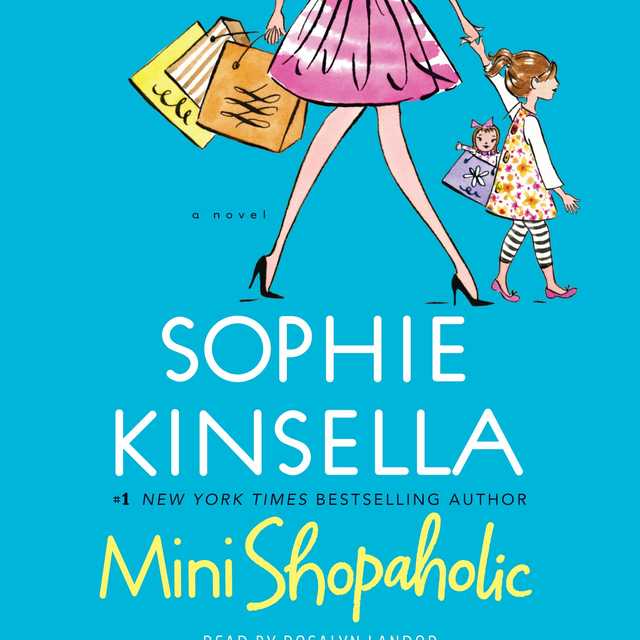
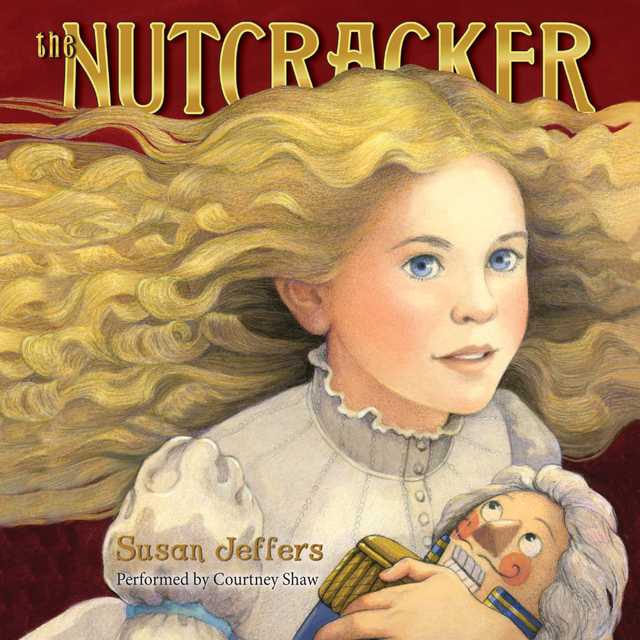
![The Rebels (1 of 2) [Dramatized Adaptation]](https://speechify.com/audiobooks/wp-content/uploads/sites/29/2023/06/pr_eaudio_9781648804489_640px.jpg)

